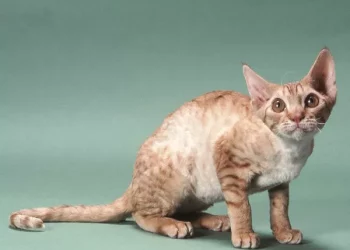Burmese cats, with their striking eyes and luxurious coats, are known for their friendly and sociable nature. If you’re considering adding a Burmese cat to your feline family, it’s natural to wonder how they will interact with other cats. In this article, we will explore the social tendencies of Burmese cats and delve into their compatibility with other feline companions. Understanding their unique temperament and needs will help you create a harmonious multi-cat household, fostering friendships and minimizing conflicts.
The Social Nature of Burmese Cats:
Burmese cats have long been cherished for their affectionate and people-oriented nature. Originating from Myanmar (formerly Burma), they were bred to be companion animals and have retained their social and interactive characteristics. These cats thrive on social interaction and often seek out human companionship. They are known to be loving, gentle, and eager to please, making them excellent family pets.
Compatibility with Other Cats:
When it comes to interacting with other cats, Burmese cats generally exhibit a friendly and tolerant disposition. Their sociable nature extends to their interactions with other feline companions, making them an excellent choice for a multi-cat household. Here are a few factors to consider when introducing a Burmese cat to other cats:
Early Socialization:
Burmese cats benefit greatly from early socialization. If they are exposed to other cats at a young age, they are more likely to develop positive and friendly relationships with them. Kittens that grow up alongside other cats tend to adapt more easily to new feline companions in the future. However, even adult Burmese cats can be introduced to other cats successfully with patience and proper introductions.
Individual Personality:
While Burmese cats, in general, are sociable, it’s important to consider each cat’s unique personality. Just like humans, cats have their own preferences and quirks. Some Burmese cats may be more outgoing and accepting of new feline friends, while others may be more reserved or cautious. Observing their individual traits and allowing them to set their own pace can facilitate smoother introductions.
Gradual Introductions:
Introducing cats to one another requires patience and careful planning. The key is to introduce them gradually, allowing them to become familiar with each other’s scents and presence before face-to-face interactions. Separate spaces, such as a safe room or designated areas, can be used to allow the cats to acclimate to each other’s presence without direct contact. This process helps reduce stress and prevents potential confrontations.
Positive Reinforcement:
Positive reinforcement techniques can be employed during introductions to create positive associations. Rewarding both cats with treats, praise, and playtime when they exhibit calm and friendly behavior can help foster a harmonious relationship. Supervised play sessions and shared activities, such as interactive toys or gentle grooming sessions, can also promote bonding between the cats.
Individual Resources:
Providing each cat with their own resources is crucial in a multi-cat household. Each cat should have access to their own food and water bowls, litter boxes, and resting areas to prevent competition and potential conflicts. Having multiple resources scattered throughout the house can help avoid territorial disputes and promote a peaceful coexistence.
Time and Patience:
It’s important to remember that the process of introducing cats to each other may take time. Some cats may bond quickly, while others may require a more gradual integration. Patience is key, as forcing interactions or rushing the process can lead to stress and aggression. Allowing the cats to set the pace and providing a calm and supportive environment will increase the likelihood of successful integration.
Conclusion:
Burmese cats are generally known for their social and friendly nature, making them a good choice for households with multiple cats. With proper introductions, patience, and respect for their individual personalities, Burmese cats can adapt well to other feline companions and form lasting bonds. However, it’s important to remember that every cat is unique, and there may be exceptions to this general temperament. Paying attention to their individual needs and providing a nurturing environment will go a long way in fostering harmonious relationships between your Burmese cat and their furry companions. With love, care, and proper introductions, you can create a feline family where everyone can live together in happiness and contentment.

























